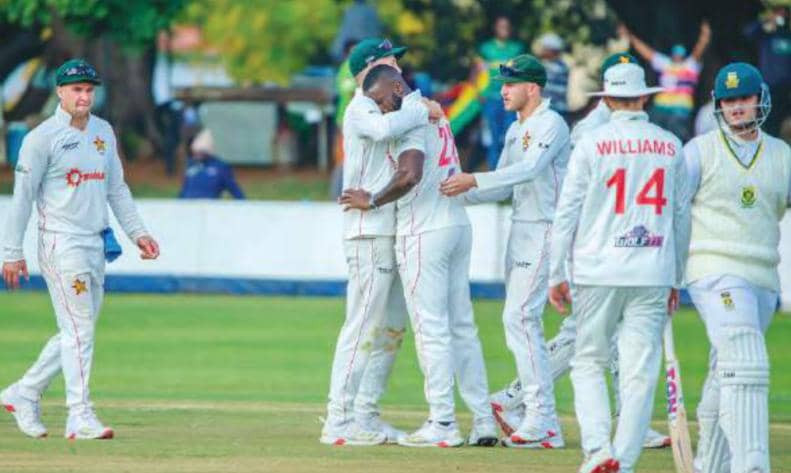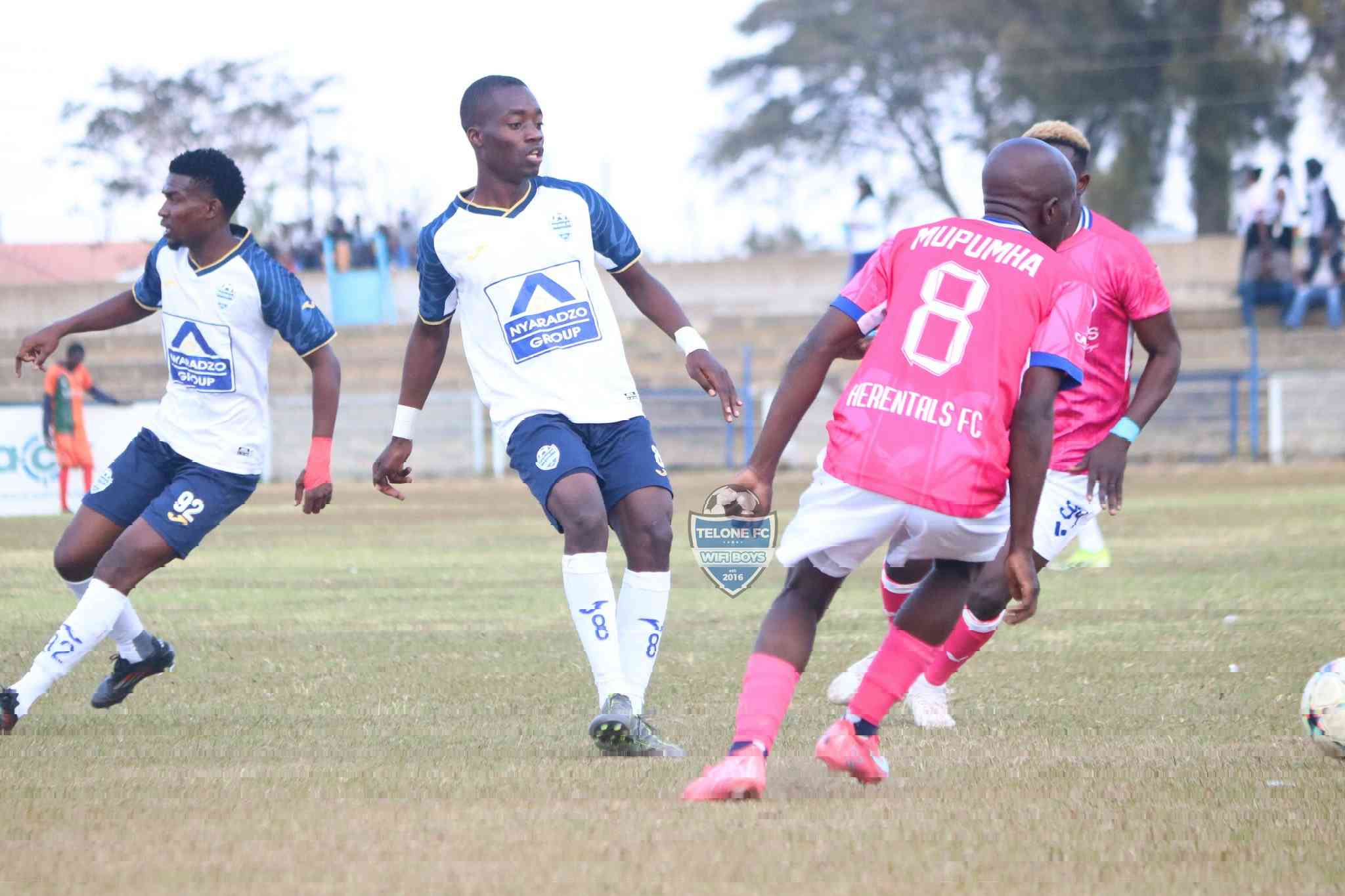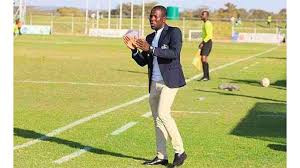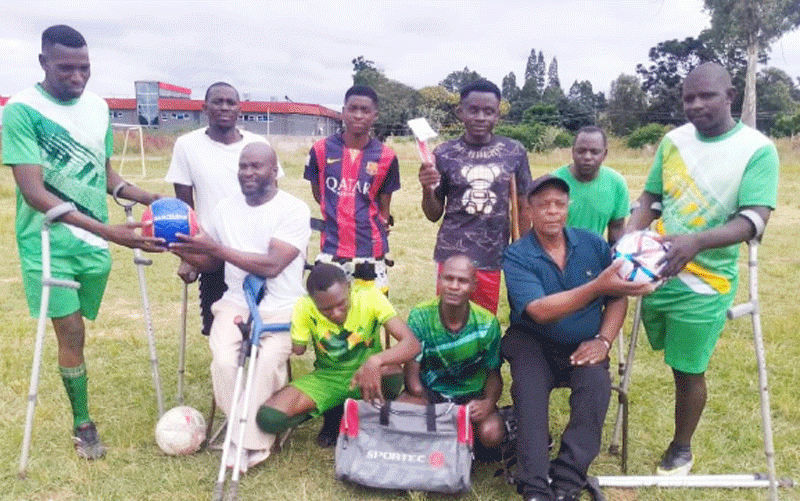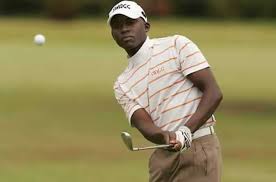
BY DANIEL NHAKANISO
Tongoona Charamba had been a professional golfer for barely two years when he became the third black golfer to win on the Sunshine Tour circuit after clinching the SAA Pro-Am Invitational at Kempton Park Golf Club in 2006.
Two years later, he won the Namibia PGA Championship in an impressive season in which he went on to finish a career best 27th on the Sunshine Tour Order of Merit Standings.
With total earning of more than R1 000 000 (around £90 000 or $125 000) on the tour, Charamba was the second highest earning black professional golfer on the continent after South African golfer James Kamte.
TC, as he is affectionately known in golf circles, had the golfing world at his feet and looked destined to make the next leap in his career by fulfilling his life-long dream of taking his talents to the more lucrative European Tour and the US PGA Tour circuits.
In September 2007, Charamba won the First Stage of the European Tour Qualifying School at the Oxfordshire Golf Resort in England, finishing ahead of the then future world number one Rory McIlroy from Northern Ireland, who finished in a tie for 13th place.
Sadly, Charamba would eventually come short of earning his European Tour card at the final stage of Q-School in Spain. A few months earlier, Charamba had narrowly come short of joining the world’s best golfers on the US PGA Tour after failing to secure a card at the tour’s Qualifying School, succumbing in the first stage.
It seemed it would be just a matter of time before Charamba fulfilled his life-long ambition of following in the footsteps of his legendary countrymen Nick Price, Tony Johnstone and Mark McNulty.
- Chamisa under fire over US$120K donation
- Mavhunga puts DeMbare into Chibuku quarterfinals
- Pension funds bet on Cabora Bassa oilfields
- Councils defy govt fire tender directive
Keep Reading
However, 11 years after making his breakthrough as a pro, Charamba cuts a frustrated figure. lack of sponsorship due to the prevailing tough economic environment means he is no longer able to compete regularly on the international circuit.
While it is not in doubt that he remains one of the most talented local professional golfers, as his domestic results would testify, Charamba continues to be restricted to cameo appearances on the Sunshine Tour.
“We make plans, but God has the final say. I have been judged by people who watched from the sidelines without detailed information. People do not understand what sacrifices sportspersons take to achieve certain goals and what input or investments are required to propel an individual to the next level, and I see the trend still continues in our midst.
“Sport is still perceived an afterthought in our country yet it has changed the face of economic growth the world over. I cry when we have to wait for just the Zimbabwe Open, which comes once a year to parade our skills against guys that play week-in, week-out,” he says.
Amidst all the adversity, the 35 year-old former top Zimbabwe amateur surprisingly remains optimistic that he can rediscover the form that once made him one of the country’s rising prospects.
“I would want to make it into the European or the US PGA tours, once I achieve that, then I will be a fulfilled golfer. With the right support from corporates, I have no doubt that I can definitely make it, ‘mvura inoyerera nepayakambofamba napo’ [water always follows its path],” Charamba told Sports World in an interview last week.
“It’s been tough; the impact on our economy hasn’t spared us at all. Most of us have resorted to teaching just to try to make ends meet yet our core business is playing and you really can’t blame the guys,” Charamba says in reference to a lot of his golfing peers who have suffered the same fate.
“To try and practise on a daily basis while not knowing when next you’re gonna play in a tournament is a big setback and financial burden. A 100 practise golf balls cost $6 and for a professional to say you have practised adequately, you need at least 300 balls a day, that’s $18 daily. In addition to that you’ll need a drink and food and to go to the gym, just to name a few of the daily requirements to compete at the highest level. Golf equipment doesn’t come cheap and your transport and accommodation also need to be catered for.”
The self-funded former top Zimbabwe amateur golfer says he is saddened that the flagship Zimbabwe Open Championship continues to be dominated by South African golfers since its return on the Sunshine Tour schedule in 2010.
He, however, blames the failure by local professionals to challenge for the coveted title on lack of opportunities to compete outside the country on a regular basis.
“The more we compete outside our borders, the better chance we have to win our own Zimbabwe Open, otherwise the money raised to host the tournament is a donation to the South African contingent who grace the event. With the right support, for your own information, it requires about $30 000 to play a full Sunshine Tour schedule a year and the return on that is five times more,” he says.
The last born in a family of six, Charamba started playing golf as a teenager in 1995 at the persuasion of his brother, Tapiwa, who was a caddie at the Police Golf Club near their home at Tomlinson Depot camp in Harare.
Also an immensely talented soccer player from a tender age, Charamba was at one time torn between the two sports, but when golf won the battle he became addicted to the gentleman’s game.
“I started golfing by mistake late in 1995 when I followed my brother Tapiwa who was a caddy at Police Golf Club. He was playing off a plus 3 handicap then, he taught me to hold the club and on my very first day out, I had a hole in one. Back then, I was a full-time soccer player and had just made the Zimbabwe U-17 team, though I later opted for golf,” he says.
Charamba’s parents divorced when he was just three in 1985 before his father died in 1999 and his mother two years later. He was, however, determined to overcome the adversities of his childhood.
Through hard work and determination, he rose to become the country’s top junior player, recording a famous victory over US-based top Zimbabwean professional Brendon de Jonge in the Mashonaland Junior Championship at Ruwa Country Club for his very first golf tournament win.
A distinguished amateur career would follow for Charamba, who led the Zimbabwe Golf Association Order of Merit Standings from 2000 to 2002.
Such was Charamba’s dominance as an amateur that in 2002 he won an incredible 12 tournaments before turning professional. Charamba was taught the sport by the late great teaching professional Tim Price, who groomed many champions, including his brother Nick who was inducted into the Golf Hall of Fame in 2003.
Charamba’s overriding passion was always to follow in the spike marks of his idol, the former world number one ranked Price, who he had watched as a youngster winning the Zimbabwe Open at Royal Harare Golf Club.
“I remember watching Nick playing in the Zimbabwe Open way back in my career,” he told 7CsGOLF.com in 2010. “I have yet to see someone hit the ball so straight. He could work the ball too.
“I’ve always been working my butt off to get to that level. He inspired me a lot with what he’s done for golf and his achievements. It’s my dream and wish to play outside Africa, especially in America because I feel and know I have the game.”
With the trials of the last decade now in his rearview mirror, Charamba hopes he can once again become the golfer that had showed much promise since his youth and fulfil his dream of competing on the big stage.

